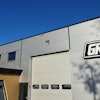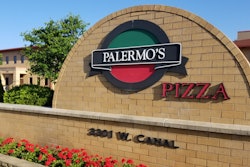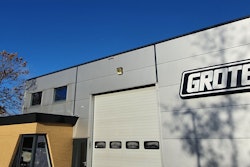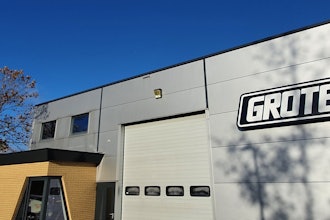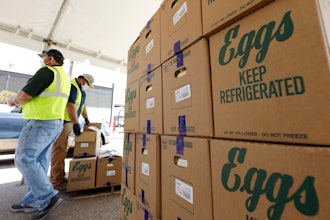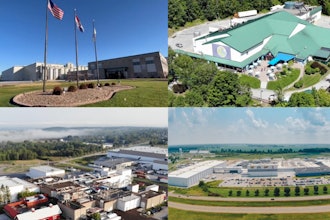This article is Part II of a two-part series. For Part I, click here.
With the right solutions and planning, a warehouse can be a product and inventory manager, a dynamic process enabler, a key factor in rationalizing new SKUs, a sales growth catalyst, a business planning tool and a flexible entity that adapts to new market forces as they arise. But the bottom line growth comes from effectiveness married with efficiency.
So, when is the right time to invest in automation systems? Of course, volume is a critical factor. If you are moving seven to 15 million cases a year, there are many compelling reasons to automate at the highest level. However, smaller facilities also have had great success when implementing systems using different levels of automation.
The more pressing question might be: How fast can I see a return on investment? Automation implementations can cut some costs, like labor, immediately. Yet there are many factors to consider in calculating a reasonable ROI timeframe. Admittedly, implementation can take time and disrupt current operations to a degree. That can be factored in, along with gains from enablers and partners, changes to delivery routes, new revenue strategies and reduced stress on personnel. Other residual benefits that can also tip the ROI scale are increased inventory visibility, reduced product and packaging damage, and energy use savings.
Compare Apples to Apples
While the benefits and potential ROI of warehouse automation are clearly there, many myths or misconceptions about automation still exist. Many reluctant distribution managers immediately imagine comprehensive, large-scale implementations that require a taxing investment of time and energy to put into place. Before looking at the costs involved, most feel like they can’t afford even thinking about automation because they believe the systems are “all-or-nothing” propositions. That is hardly the case. There are numerous entry levels and scalable systems offered in the market today.
Another misconception is that most automation systems are inflexible or “one-size-fits-all.” In fact, every installation is customized to the specific needs inside each warehouse. Fully automated systems may not be for everyone and, in fact, semi-automated installations can often provide more flexibility, and efficiency, for some warehouse operators.
It’s also critical to separate systems that are automated in name only and not fully integrated systems. When comparing costs, make sure you itemize all the systems involved to make sure you’re making accurate comparisons. One might get confused when shopping around for warehouse automation solutions, where prices range from $300,000 systems to over $1 million. Closer inspection might reveal that lower price options are not true automation systems, and may be variations on voice-picking automation, for instance.
An example of a successful semi-automated implementation is Straub Distributing, a beverage wholesaler in Southern California. The flexibility and scalability of the semi-automated Vertique case picking system enabled Straub to meet its stringent ROI hurdles, whereas a fully automated system might not have had both flexibility and a quick payback schedule. The Straub installation utilizes semi-automatic towers that are loaded manually, which minimizes system costs. Palletization and case mixing, though, are automated. The simplicity of the Vertique system was another key factor in the company’s choice, which did not require hiring high-priced programming specialists.
When asked why Straub chose ITWWA’s Vertique over other case picking solutions, Rick Sweeney, Straub’s Executive Vice President, didn’t hesitate. “That’s easy,” he said. “Without Vertique, we would have gone without any sort of automation.” The scalability of the Vertique system, and the company’s extensive experience, ultimately drove Sweeney to purchase the ITWWA solution.
Plan to Automate
Deciding when or how to automate your warehouse can be an overwhelming task. And while ROI turnarounds in three years are not unheard of, they are most successful when warehouse operators take a considered, flexible approach. It’s better to be planning ahead for changing market demands than trying to catch up after the fact.
Total volumes, the number of SKUs, the need for mixed case pallets or the better management of inventory — each one of these reasons individually could provide the impetus to invest in warehouse automation. But most often, all of these are slices of the same warehouse management pie.
It’s never too soon to look at your particular warehouse automation situation more closely. It might be reassuring if it turns out that it’s too soon to invest. But that knowledge is valuable as well. At least you’ll have a plan of action ready when the time is right.
Paths of Least Resistance
Automating one’s warehouse operations can seem daunting. When faced with expansion, adding manual labor or expanding into a new building can seem like the easiest paths. However, these paths are probably not the most efficient or the most profitable. For a direct impact on your bottom line, there are a number of scenarios in which you might benefit quickly from warehouse automation:
- Are you operating out of an existing building and need to maximize storage?
- Are you developing a new building and want to optimize storage and efficiency from the start?
- Are you consolidating multiple facilities or distribution centers into one central location?
- Are you acquiring multiple distribution centers?
- Are you looking to increase throughput while simultaneously reducing labor costs?
- Is SKU proliferation negatively impacting your productivity?
- Is shipping diversification eating up your storage capacity?
If you answer Yes! to any of these questions, then it’s time for an assessment of your operation. For more information, visit ITWWA at: www.itwwa.com , or call: 1-828-654-7500.
About ITWWA
ITW Warehouse Automation (ITWWA) is the global supplier of innovative, fully-integrated warehousing solutions. Whether looking to optimize existing facilities or new buildings, ITWWA provides proven, scalable systems for a variety of industries. The ITWWA portfolio includes two of the industry’s most innovative technologies: Vertique, the world’s most proven case picking solution, and StorFast, the industry’s leading cart-based AS/RS system. These solutions are further backed by ITWWA’s VPS software that manages the entire warehouse operation and robotic VTP Palletizers that provide fast, automated pallet loading.
ITWWA is part of the Illinois Tool Works (ITW) family of companies. ITW is comprised of over 850 decentralized business units located in 52 countries. ITW offers its business units unparalleled access to state-of-the-art testing facilities, knowledge-sharing and a global network of resources.




